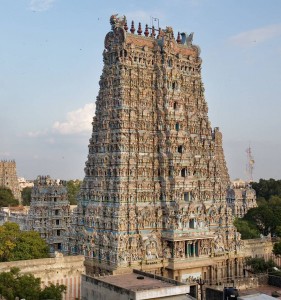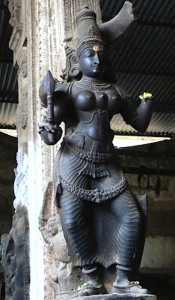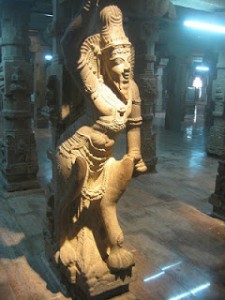TRADITIONAL INDIAN CULTURE is replete with legends and mythologies where heroes and heroines have chosen various genders without guilt, and their choices have been accepted and respected by the community. Ironically, today the Western nations are progressive in research and education about variant expressions of gender and sexuality, while in India—despite our rich cultural heritage of representing and celebrating gender variations and choices—we are lagging behind the West, having lost that sensibility of old India. It is due to the colonial legacy of English rule and its shallow Victorian values that we have come to see gender variation as deviant and even criminal.
“Gender” is related to physical and emotional perception of an individual. Restricting gender to non-intersecting binary categories of female and male is erroneous as a factual matter. In traditional India, there are more than twenty terms corresponding to separate gender categories. This diversity in turn gives rise to a wide variety of what we would call sexual orientations. Here the focus will be on gender variants rather than on homosexuality as such.
While students of medicine, engineering, law, and literature specialize in their many subdisciplines, we lack the basic tools with which to study the biological, bio-ethical, legal, psychological, and social dimensions of the fundamental emotions concerning sexuality and gender. Though the Indian universities can offer studies in a range of synthetic disciplines that are recognized worldwide, we lack any basic, axiomatic framework pertaining to gender and sexuality. In contrast, some universities in the West have started their own departments of gender and sexuality and even sponsored related research activities. In India, the most painful condition is that even psychologists are mostly unaware of gender variants and their localized issues pertaining to Indian conditions.
India’s pre-colonial traditions—and even some localized folk traditions that survive to this day—adopted a surprisingly inclusive attitude toward sex and sex education, one that contradicts those who try to map Indian culture onto the still dominant, male-centered Victorian value system. Various folk deities and traditions emphasize the fluid nature of gender, and mythologies have stories that reinforce this idea. Children growing up in such an environment will not elicit shock or experience guilty feelings upon discovering their own gender-variant sexuality or that of other people. The Koothandavar temple festival in Tamil Nadu is an example of a local folk tradition that’s organically linked to pan-Indian culture’s conceptualization of gender variants.
These cultural possibilities need to be taken up and explored to create democratic social space for gender minorities. Stories from traditional Indian culture provide a ready and comprehensive solution to the challenge of inculcating a social awareness of gender variation starting from grade school days and progressing into the high school curriculum with a biology and psychology of gender issues over the whole spectrum of human variation. At the college level, teachers should be trained to initiate healthy debates and open-minded discussions on these issues. The reality is that this social responsibility has been neglected by both government and social organizations for decades, even after independence. Our social and political institutions still suffer from gender bias and the colonial mindset of the Victorian era.
One issue that needs to be addressed is terminology. Typically the terms sex, gender, and sexuality are taken to mean roughly the same thing. But they all mean different things. One’s sex (e.g., male or female) is a biological feature, while gender is a socio-cultural role that shapes social perception as well as self-identity. Sexuality refers to one’s erotic attraction toward a particular category of person.
In its long history, Indian culture has recognized a large number of genders, though the existence of this vocabulary is largely unknown, even within the GLBT community. Some forms of gender don’t even have a proper English equivalent in the Tamil dictionary, and I have coined terms in both Tamil and English for a few traditional words. In the following compilation there are more than two dozen genders other than male and female.
Basic Vocabulary:
திருநர் — Transgender
திருநங்கை — Trans-women
திருநம்பி — Trans-men
பால்புதுமையர் — Genderqueer
Specialized Gender Categories:
1. பால்நடுநர் — Androgyny
2. முழுனர் — pan-gender
3. இருனர் — Bi-gender
4. திரினர் — Tri-gender
5. பாலிலி — A-gender
6. திருனடுனர் — Neutrois (see below)
7. மறுமாறிகள் — Retransitioners
8. தோற்றபாலினத்தவர் — Appearance gendered
9. முரண்திருநர் — Transbinary
10. பிறர்பால்உடையணியும்திருநர் — Transcrossdressers
11. இருமைநகர்வு — Binary’s butch
12. எதிர்பாலிலி — Fancy
13. இருமைக்குரியோர் — Epicene
14. இடைபாலினம் — Intergender
15. மாறுபக்கஆணியல் — Transmasculine
16. மாறுபக்கபெண்ணியல் — Transfeminine
17. அரைபெண்டிர் — Demi girl
18. அரையாடவர் — Demi guy
19. நம்பிஈர்ப்பனள் — Girl fags
20. நங்கைஈர்பனன் — Guy dykes
21. பால்நகர்வோர் — Genderfluid
22. ஆணியல்பெண் — Tomboy
23. பெண்ணன் — Sissy
24. இருமையின்மைஆணியல் — Non-binary butch
25. இருமையின்மைபெண்ணியல் — Non-binary femme
26. பிறர்பால்உடைஅணிபவர் — Cross dresser
A total positive transformation in public awareness and perception will take at least another twenty years. The government, educators, and social activists should put an effort together, and the change should start from the education system. Gender and sexuality education should be part of the educational system from the primary school level and should slowly, through spiral methodology, enter the main syllabus in high schools and colleges with appropriate discourse and open-minded values.
THE CITY OF MADURAI in the state of Tamil Nadu in southern India has great historical importance in its own right, but it also has a special, indeed a vast, significance for queer history and culture. The focal point is the Hindu temple known as Meenakshi Amman, some of whose sculptures can be traced back more than a thousand years. (The present structures were built in the early to mid-17th century.)  Some of the most important sculptures in this complex of fourteen towers depict same-sex love and explicitly homosexual activity between two men or two women.
Some of the most important sculptures in this complex of fourteen towers depict same-sex love and explicitly homosexual activity between two men or two women.
Depictions of this kind have previously been found in the better-known Khajuraho monuments of northern India, but the depictions in Madurai are also important to consider. Here we find an extraordinary range of gender variants that go way beyond any simple binary system. Among them are the following examples of gender-bending sculptures:
§ There is a lesser-known transsexual type known as “neutrois” who can change their bodies such that they cannot be physically identified as male or female. The rarity of this psychosexual type is such that we were excited to discover depictions of the neutrois theme in Madurai in the guise of Kala Samhara. This deity, typically with a male-like body, is represented without any sexual organs and represents a MTN (male to neutrois) person.
§ A sculpture of particular interest is one that depicts autosexuality. Autosexuals are characterized by the lack of interest in sex with other people, preferring to engage exclusively in sexual activities such as masturbation and auto-fellatio. A sculpture of a lion in the temple depicts this auto-fellatio activity.

§ Sanishwara, who is well-known as a transgender deity, can be seen in the temple, an excellent example of gender variance.
§ The Ardanarishwara represents the intersex condition known as gynandromorphism, and this statue is the depiction of both the male and female elements in a clear way. Another deity is the Shankara Narayana which is Shiva and Vishnu combined. The combination of both male elements is quite an interesting feature of this deity. Several other deities who belong to the third gendered community, such as Sri Pitchandavar and Veerabathra, are represented here.
Another interesting sculpture we found represents the deity Arjuni with a moustache but also with breasts. This kind of gender variation exists in the real world as intersex people who have both male and female traits biologically. In the statue, the characteristics of the tri-gender (திரினர் in Tamil) type of

person can be seen. Arjuna as a male is Arjuna, as a female is Arjuni, and as a third gendered person is Brihanalla. Thus the Arjuna serves as a vivid example for the Tri-gender position in the genderqueer complex.
Meenakshi Amman herself represents another aspect in this complex, as symbolized by her three-breasted condition. She was born in the Putra Kameshwari Yaga, and she was raised as a male. In contemporary language we could think of this representation in terms of genderqueer butch or transmen imagery. The deity displays a combination of male and female elements that make it hard to say for sure; but at the same time the face displays a predominantly masculine or butch expression. Moreover, according to some critics, the

appearance of three breasts is a way of representing two breasts and a phallus, thus giving a transwoman imagery to the Meenakshi Amman deity.
The crucial point is that gender variants were so well woven into the mythological narratives of India that we should never feel estranged from them, even if today the dominant genders have tried to expel them from cultural awareness. Hindus are generally conservative today, but in ancient India they celebrated sexuality and gender diversity as a positive and even necessary part of life.
Gopi Shankar, a student of religion, philosophy, and sociology at the American College in Madurai, India, is the founder of Srishti Madurai, a space that explores genderqueer culture in India and globally.






